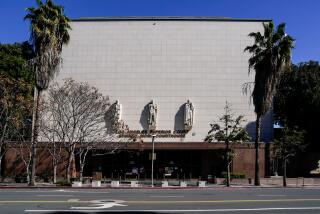Chevron Refinery Leak Estimated at 6 Million Barrels
New studies estimate that up to 252 million gallons of fuel have leaked into ground water beneath the sprawling Chevron oil refinery in El Segundo, prompting state officials to order a multimillion-dollar cleanup in what they say may be the largest ground water contamination case in state history.
Despite the amount of contamination, there is no immediate threat to drinking water supplies or of an explosion caused by leaking fuel vapors, state and local officials said.
Authorities discovered in 1985 that leaks from old tanks, pipes and ponds at the 77-year-old refinery had caused serious water contamination. The also found that high levels of gasoline vapor had seeped from the water table into a Southern California Edison Co. plant in El Segundo and four homes in nearby Manhattan Beach.
But the extent of the contamination was not clear until Chevron--which says it has already spent $36 million to treat and investigate the problem--revealed the results of its state-ordered study to officials last month.
Floating on Water
According to Chevron, a slick up to 12 feet thick and containing perhaps 6 million barrels of fuel is floating on ground water beneath most of the 1,000-acre refinery, the West Coast’s largest. That amount is equal to one month’s production at the facility.
The fuel also underlies the northern part of the oceanfront El Porto community in Manhattan Beach and an industrial strip immediately north of the refinery in El Segundo, the oil company said.
Los Angeles Regional Water Quality Control Board officials have sent a preliminary cleanup order to Chevron. The board is expected to make the order final at a hearing April 25.
“These figures are the first that indicate the actual amount (of fuel) they’re estimating in the ground water,” said Ray Delacourt, water board manager of the Chevron project.
Both Delacourt and Hank Yacoub, chief engineer of the regional board’s Toxics Division, said they know of no California case where more poisonous material has been leaked into ground water.
Chevron estimates that the cleanup could take 20 years and cost at least $86 million--far more than the company says it expects to make by selling the gasoline, diesel, jet fuel and various kinds of partially refined petroleum recovered from the ground water.
“Basically, Chevron is paying today, and will pay in the future, for the sins of their past,” Delacourt said.
He said Chevron is cooperating with the state. A spokeswoman for the oil company called the water board abatement order “a good step.”
“This is not adversarial at all,” she said.
Although hydrocarbon vapors were found at high levels in several buildings adjacent to the refinery in 1985, and potentially explosive levels were discovered in cracks in concrete walls in two homes, fumes have been greatly reduced by a new Chevron treatment system and pose no threat today, state and local officials said.
No Threat to Water Seen
A number of circumstances--including the slope of contaminated water basins away from drinking water wells and a county water-injection program that keeps saltwater under the refinery from flowing inland--make it unlikely that the fuel will ever threaten the area’s drinking water supply, Delacourt said.
Fuel has been found floating on only the uppermost of three ground water basins beneath the refinery. That top basin, the Old Dune Sand Aquifer between 20 and 100 feet below ground level, was already unusable because ocean water had filtered into it, water officials said.
Dissolved fuel has been discovered by Chevron in “very minor” quantities at several locations in a second brackish water basin, the Gage Aquifer, about 40 feet below the Old Dune aquifer, said oil company engineer Kristin Gunter.
No fuel contamination has been found in the Silverado Aquifer, the coastal area’s major drinking water basin, which is about 40 feet below the Gage basin and less than 200 feet below ground level, Gunter said.
Even if the dissolved fuel were to penetrate the layers of clay between each aquifer and reach the drinking water basin, “I still wouldn’t be terribly concerned” because of the natural seaward slope of the basin, Delacourt said.
That advantage could become important, since Chevron engineers say they may not be able to retrieve a sizable portion of the leaked fuel.
“Our best estimate at this point is that we may get between 50% to 70%,” said Gunter. “We want to recover it all, but we’re just going to have to work (with) new technology as it is developed.”
While Chevron says that up to 252 million gallons of fuel are in the ground water, the actual amount may be as low as 84 million gallons or even less, Gunter said.
Chevron is already two years into a program to recover leaked fuel and to make sure no undetected leaks occur in the future, Gunter said. All of the refinery’s 270 storage tanks have been checked for soundness, and double-lined bottoms will be installed on all tanks that contain toxic materials by the end of the year, she said.
Under the water board order, the company will operate a minimum of 52 wells to extract the fuel, plus 35 more wells to inject water back into the polluted water basin.
Numerous wells to monitor water quality in each of the three underlying aquifers are also required, with reports filed quarterly with the state, Gunter said.
UNDERGROUND POLLUTION
Fuel leaks from tanks, pipes and ponds at the Chevron refinery have formed a slick up to 12-feet thick in ground water under most of the oil company’s 1,000-acre facility and beneath small adjacent portions of El Segundo and Manhattan Beach shown by hatching.
Drinking water wells are not now threatened, officials say, because any flow of the fuel to the east is restricted.
(1) A series of pumps keeps water under the refinery from moving eastward.
(2) Water basins under the refinery slope toward the ocean and away from the wells.
(3) Drinking water wells closest to refinery are about two miles away in Redondo Beach and Hawthorne.
More to Read
Sign up for Essential California
The most important California stories and recommendations in your inbox every morning.
You may occasionally receive promotional content from the Los Angeles Times.






